
The hairline plays a significant role in a person's overall image. Hairline hair transplants offer an effective way to boost confidence and regain a youthful and healthy appearance. However, there are cases where inexperienced medical practitioners or careless procedures can lead to unsatisfactory results. Today, we'll explore hairline hair transplants gone wrong and how to anticipate better outcomes.
Transplanting in the Wrong Direction
The angle at which hair is transplanted can significantly affect the naturalness of the result. When transplanting, it's crucial to mimic the direction of the existing hair.
| 1 | 2 |
|---|---|
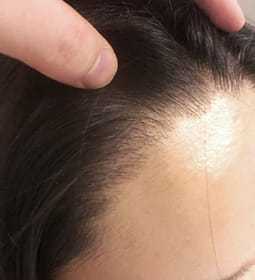
|
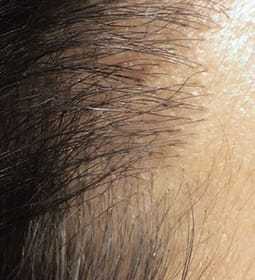
|
In the first image, you can see that the transplanted hair is pointing in a different direction than the natural hair, causing the hair to stand upright and not blend in.
A closer look at the second image reveals that the original and transplanted hairs have angles that are nearly 90 degrees apart, resulting in an unnatural appearance.
Insufficient Density
© forhair.co.kr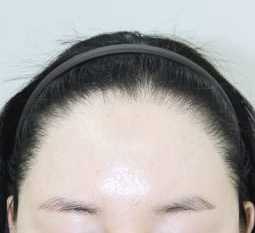
When hair density after transplantation is too low, it can be challenging to enjoy the full benefits of the procedure. Even with hair transplantation, achieving the same density as natural hair is difficult. However, extremely low density is a common example of unnatural hairline hair transplants.
Transplanting Multi-Follicular Units in the Hairline
In general, a single hair follicle can contain one, three, or even more hairs, and the thickness of individual hairs can vary. Typically, when reconstructing the hairline, fine single-follicle units are preferred for achieving a natural look.
| 1 | 2 | 3 |
|---|---|---|
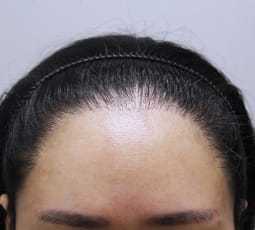
|
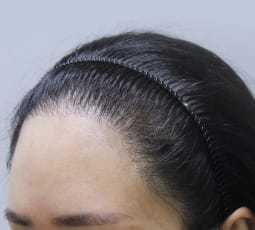
|
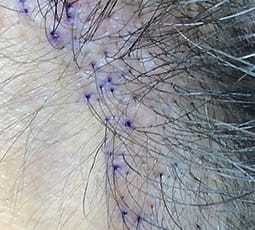
|
In the first and second images, multi-follicular units and thick hairs were transplanted into the hairline, resulting in an awkward appearance reminiscent of a doll's hair.
The third image showcases multi-follicular units transplanted in the wrong direction, leading to hairs growing at odd angles.
These cases are often attributed to the lack of experience and expertise among medical practitioners. Given that hairline hair transplants are relatively rare surgeries, selecting a clinic with extensive experience and proficiency is a wise choice to ensure a successful outcome.